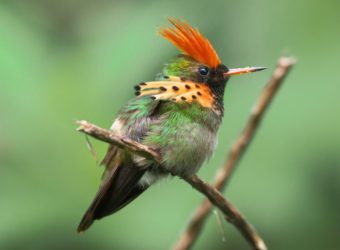It’s All in the Name
For the past couple of weeks, a hummingbird has been visiting our blooming pollinator garden. We’ve loved watching it buzz around from flower to flower, and we’re happy to know that our garden is helping supply it with the food it will need for its long southbound journey this fall.
It’s a member of the one hummingbird species that we’re likely to see around here: a Ruby-throated Hummingbird. Watching it, I’ve been reminded again of the problem with the species’ name: The bird in our garden is a female, and female Ruby-throats don’t have ruby throats. (Theirs are a dirty white.)
I could probably write an entire essay on species named after a feature found only in the male (and speculate on the fact that nearly every bird species was named by a man), but the Ruby-throat made me think of something else.
Our bird names are not only inaccurate, they’re boring.
I don’t mean the Latin scientific names, which experts use to make sure they’re clearly identifying the bird they’re talking about. Those are essential, with Latin (no one’s first language) serving as a kind of lingua franca worldwide.
I mean the English common names, which are merely handy ways for laypeople (and scientists, when they’re not working) to talk about a bird without sounding pretentious. (You’d be much more likely to say, “I saw a robin,” or even “an American Robin,” than try to impress your friends with, “I observed a Turdus migratorius.”)
And however much English has become “the world’s language” (too much, in my opinion), it is not the only language used to name birds. My field guide to the birds of Belize, for example, points out that Ramphastos sulfuratus, the Keel-billed Toucan in English, is called the Belizean Bill Bird in Belizean Kriol, the Selepan in the Mayan language spoken by the nation’s Q’eqchi’ communities, and the Pun by the Mopan Maya people.
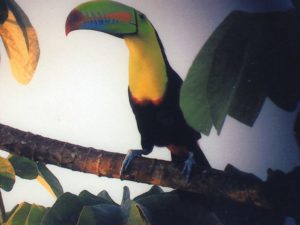
So, since neither science nor the world demands it, why choose such a bland name as “Keel-billed” to describe this spectacular toucan? The answer, of course, is that the common name is most often designed to help us identify a species, to point us towards the feature that will allow us to go “aha!” and check it off our list.
This is a fine idea, but the truth is that birds’ common names often fail at even this modest endeavor. Too often, they’re both dull and unhelpful.
Take our example, the Keel-billed Toucan. I’ve never learned what a “keeled” bill looks like, much less how to spot one when the bird is perched in a tree a hundred feet up. And I probably never will, mostly because I don’t have to: This gaudy bird boasts at least four other more distinctive features, most spectacularly its enormous rainbow bill, which is unlike any other large toucan’s.
So why not borrow from the Kriol and call it the Many-colored Bill Bird instead? Or the Rainbow-schnozzed or Red-butted Bigbill? (Okay, those last two might be too much to ask.)
Why not? My guess is because scientists think that such names wouldn’t be dignified enough for the genus Ramphastos, which includes all the large toucans. (The makers of Froot Loops cereal might disagree.) Instead we get not only the Keel-billed Toucan but its close relatives the Channel-billed (I defy you to spot the “channel” in the field); Yellow-throated (that’s fine…except that many other Ramphastos toucans have yellow throats as well); and Citron-throated (um, “citron” is basically another word for yellow.)
Sadly, toucans are far from alone in being given names that are both dull and unhelpful. To find an example closer to home, take a look at the Red-bellied Woodpecker. Then take another look and try to spot its red belly. Or, rather, don’t bother: I can’t speak for anyone else, but I’d prefer to identify this common species by its barred back, red cap and nape, buffy face and breast, and distinctive, throaty call. (By the way, the reddish belly does exist, but is rarely noticeable.)
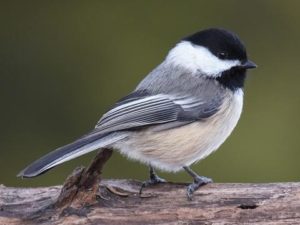
And then there’s the Black-capped Chickadee. While this species does boast a prominent black cap, so does the Carolina Chickadee (which overlaps with the Black-cap in part of their ranges) and a couple of other chickadee species. It’s not a very distinguishing characteristic.
I could go on, but I won’t. And, to be fair, some of our species have been given more vivid names. The Northern Catbird is named after its meowing call, the Bald Eagle is a livelier name than “White-headed,” and the Scarlet Tanager’s moniker seems to capture that species’ vibrancy pretty well. But such examples are too few and far between.
The most frustrating thing about all this is that it’s not even necessary! There’s no rule dictating what kind of common name ornithologists must choose. And with one family of birds at least, they have allowed their most poetic impulses to run free. That family is Trochilidae, the hummingbirds, the same one that contains our own (blandly and incompletely named) Ruby-throated.
I don’t know why hummingbirds have been treated differently. Perhaps they’re simply too beautiful to saddle with something dull. For whatever reason, most aren’t even called “hummingbird.” Instead, even a quick look through the plates of my Ecuador bird guide reveals such glories as the Crowned Woodnymph, Spangled Coquette, Blue-chinned Sapphire, White-vented Plumeleteer, Green-tailed Trainbearer, Empress Brilliant, Tourmaline Sunangel, Violet-tailed Sylph, and Amethyst Woodstar.
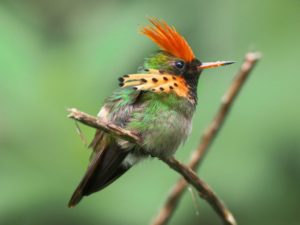
Brilliants! Coquettes! Woodnymphs! Don’t those names make you want to drop everything and go chasing after the birds themselves? They do me. And they don’t even include what may be my favorite bird name of all, a hummingbird named by someone who must have been head over heels for the species and its whole remarkable family.
The Shining Sunbeam.
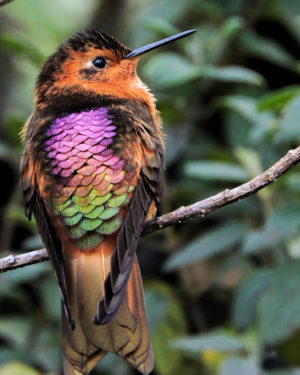
Looking at the picture of the Shining Sunbeam in my Ecuador guide, I’m struck by the fact that it isn’t even the most spectacular of hummers. (Take a glance at the Crimson Topaz or Rainbow Starfrontlet for ones that can make your jaw drop.) The name is also completely unhelpful as an ID tool; if you’re searching for a sunbeam come to life, what features do you look for?
But who cares? By giving hummingbirds such glorious names, scientists have made “helpfulness” secondary to something far more important: Reminding us that birds are themselves glorious, and that getting to share the planet with them is a gift worth celebrating.
Look, such names tell us. Look closely. Aren’t they beautiful, like sunbeams?
Copyright © 2021 by Joseph Wallace
